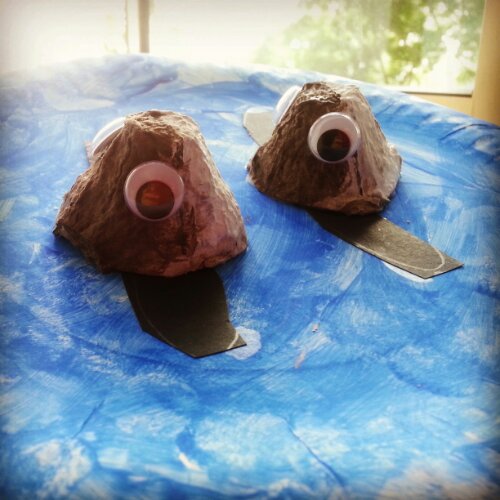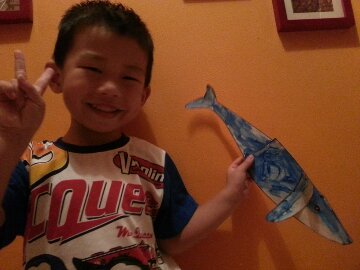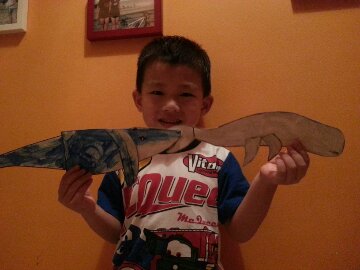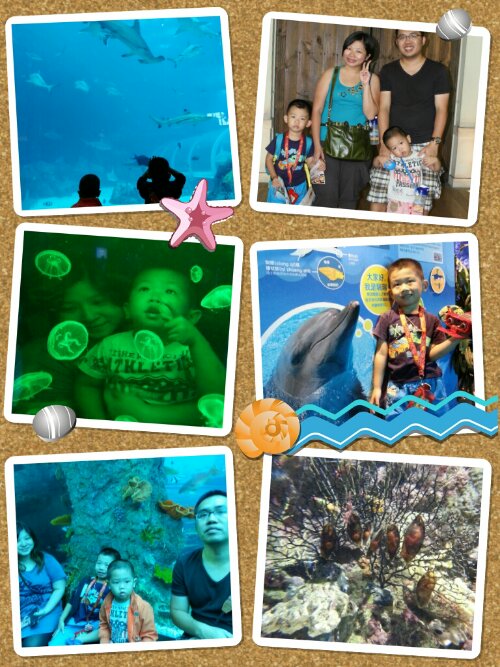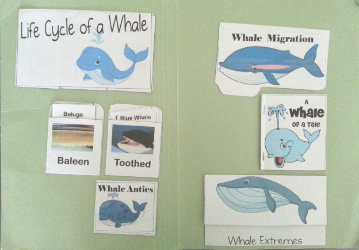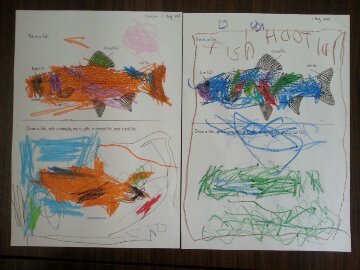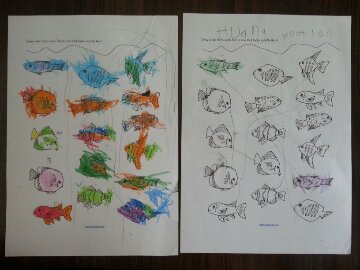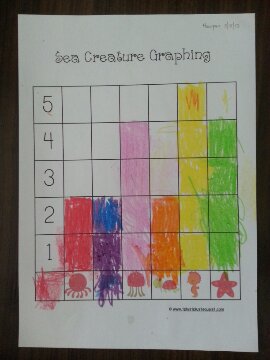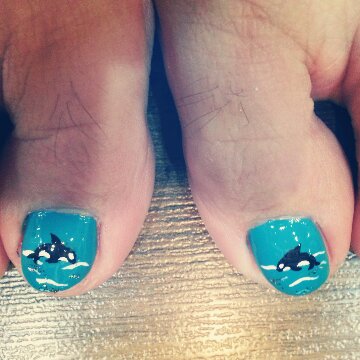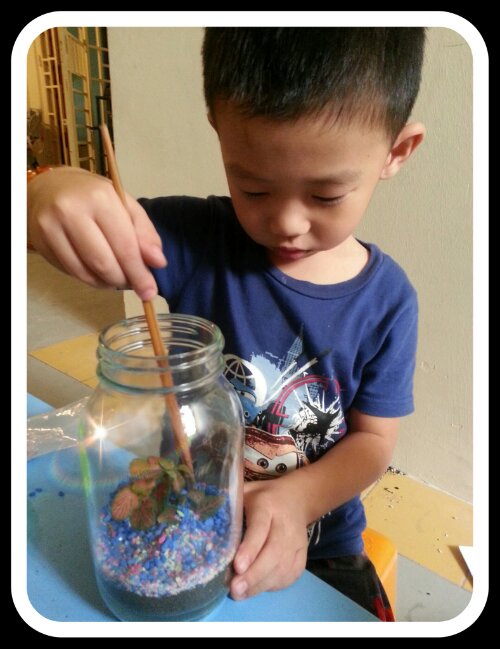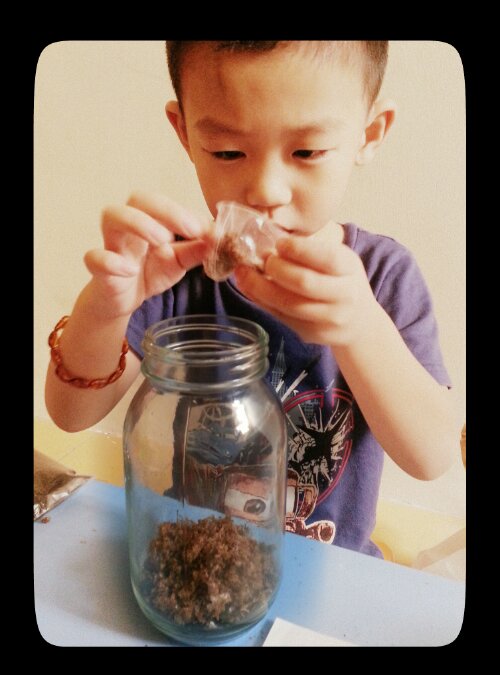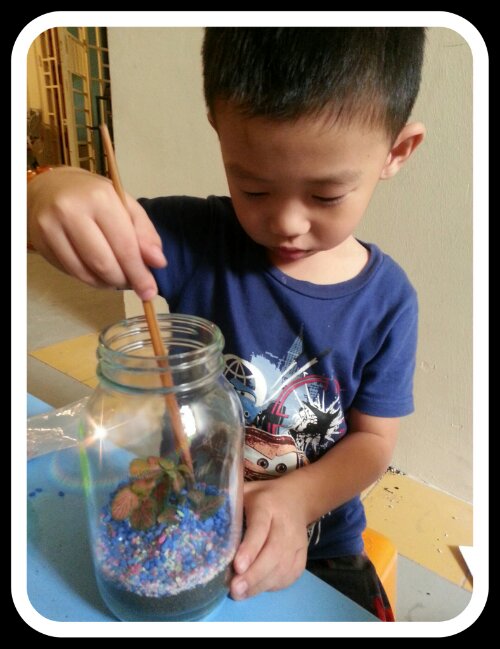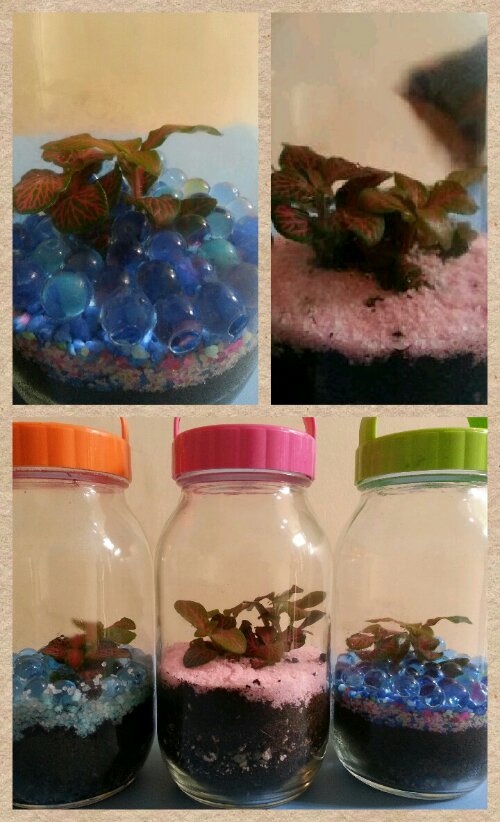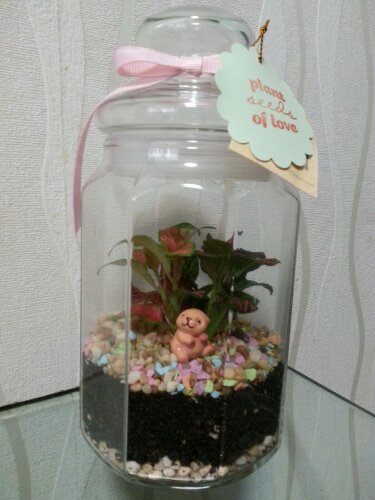Home learning has taken a huge backseat for the last couple of months due to my heavier work commitments. I set out to do this ocean animals theme in July 2013 but only found the time to implement it sporadically from August to December 2013. It’s amazing that the boys’ interest can be sustained for so long.
The appeal of the deep sea first came from a Disney Nature film “Oceans”. “Oceans” explores the mysteries of the ocean through the eyes of a boy who wonders what marvels lies beyond the coastline and beneath.
The film was taken over Earth’s five oceans and offers an unprecedented look beneath the sea. Unlike most documentaries, there was no narrator in this film. The powerful cinematography speaks for itself. The musical pieces stirs and arouses the emotions. One feels both the calming and gentle effect the sea brings forth and also the fierce tension as the sea creatures engage in battle. The finale draws a compelling message of the influence of man’s activities (overfishing and water pollution) on the ocean.
The boys have been rewatching this film for at least 3 to 4 nights every week the past month. When Meow tried to introduce other oceanic documentaries, Xxm still chose “Oceans”. Xmm typically watches the film from afar. Regardless of the number of times he watches this film, the fighting scene between a crab and a shrimp scares him. Despite this, he is still very interested in the film.
Hence to extend our learning of the movie, we primarily read. Loads and loads of books about the ocean animals. In one of our reading, we discovered that whales typically swim in groups called pods whereas sharks prefer to swim alone. Xxm decided there and then that he liked whales and Xmm loves sharks. This to me, spoke volumes of the kids’ inclination towards independence.In particular, Xxm has a fondness for killer whales and Xmm, the great white.
Art & Crafts
One of our earlier activities was a killer whale craft. We tried to depict spyhopping killer whales.
Having learnt more about whales, Xmm decided that he liked the beluga whale too. So we did another craft from Learn create love.com who is really one talented mummy who created many different craft templates for her daughter to work on. We did the killer whale craft and the beluga whale craft.
Sadly, Xmm refused to be pictured with his beluga whale. So here’s Xxm with the completed crafts.
Xxm attended a trial art class at the Artary and lo and behold, the theme was ocean animals too. Through this single trial session, he learnt to draw fishes which were apparently killer whales according to him.
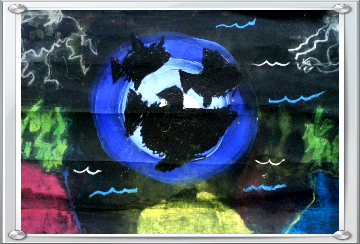
Field Trip
With the aquarium at our doorstep, the learning for this theme will not be complete without a trip to the newly opened S.E.A Aquarium. The boys were exhilarated and couldn’t contain their excitement pointing out all the sea creatures they knew.
I was fascinated by the shark eggs exhibit. You can see the embryos wriggling inside the eggs.
Lapbooking
We also attempted the whales lapbook from homeschool share.com. Most of the activities were too advanced for Xxm and Xmm. We read about the concepts but I found it difficult for Xxm to reproduce it in the form of a lapbook. Out of the activities, Xxm enjoyed sorting toothed and baleen whales the most. He also delighted in colouring on the map the regions which the killer whales swim. He knows that the killer whales like to swim in colder waters and the beluga whale likes the icy cold polar regions.
Coincidentally, his school was also working on ocean animals theme and he picked up many concepts from his teacher. These were information that I didn’t think he could comprehend. For example, he mentioned to me that whales are mammals. It made it easier for me to explain the life cycle of the whales and how it differs from the sharks. The trip to the SEA aquarium further cemented this knowledge.
This was one of his earlier drawings which the school has taught him. I am an idiot at drawing and have absolutely no idea how to teach my child to draw, thinking it’s a talent more than anything. However, through this exercise, I realised that drawing must be taught too and we can do it by piecing basic shapes together. This was a whole new idea to me.
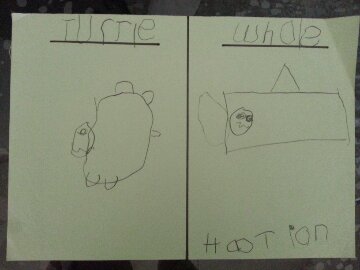
Kidsparkz Curriculum
I selected worksheets which the boys can do from the Oceans theme pack in the kidsparkz curriculum. The theme pack is filled with tons of printables (147 pages) suitable for ages 3 to 6. I just didn’t have the resources to go through each and every one with the boys. Each theme pack comes with songs and poetry and numerous literacy and numeracy activities that you can carry out with your children.
Of these, we did the parts of a fish worksheet and another matching worksheet to train their observational skills. We also worked at drawing a fish. Xxm did a fairly decent job at imitating but I thought the art trial at the Artary did a better job training him to draw with shapes.
We also identified the parts of a fish on our marketing trips, our visit to the aquarium…basically whenever the opportunity arises. Subsequently as we read more books on the different types of whales, Xxm became very skilled at identifying the various types of whales based on their dorsal fin.
Mathematics
This is the first time we did graphing with the boys. They love it and ask to do this activity repeatedly until the lifespan of the paper cube ran out. Our sea creature graphing printables came from 1+1+1=1. I couldn’t resist this because the graphics were simply too adorable!
Xxm did the graphs from 1 to 10.
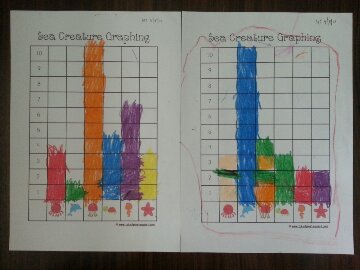
There was another option for Xmm to do the graph for 1 to 5.
I cannot emphasise enough how much the boys enjoyed this unit study. Most of the learning actually takes place on our bed, surrounded by the tons of books which we hoarded from various libraries. There was also a lot of fooling around, pretending to be killer whales or sharks. One day, I came up with a killer whale song sung to the tune of Pussy Cat, Pussy Cat. The boys are really tickled by it. It goes like this:
Killer whale, killer whale, where have you been?
I have been, I have been swimming in the sea.
Killer whale, killer whale, what did you do there?
Spyhopping, lob tailing, anything I like.
Sometimes, I leave the last sentence hanging for the boys to fill in. We sang so much of this that Xmm came up with his great, white shark version. Even the baby Xmx is tickled by this song. Perhaps from listening to the squeals and giggles from his older brothers.
We also made a lot of references to the Oceans movie, revisiting various scenes. Xxm knew so much about the subject matter that he was called upon to share his knowledge about various whales with his classmates. Through reading, he learnt about the habitat, predator – prey relationship and many more. After such intensive reading, I am ashamed to say that I still cannot tell the whales apart except the very obvious. But Xxm could!
Lastly, to show my ardent support for my kid’s interest, this is what I did!
List of NLB Books
1. Killer Whales (B25877131A)
2. The Megamouth Shark (B21341736E)
3. Orcas(B27920354J)
4. Tiger Shark (B28187055C)
5. Blue Whale: The World’s Biggest Mammal (B19720533H)
6. Great White Shark (B21130265I)
7. Dolphins (B21517595B)
8. Why why why do dolphins squeak? (B20334410F)
9. Whales (B27979399K)
10. Whales (B22651628J)
11. Sharks (B28198410K)
12. Whale Shark (B28193326A)
13. Blue Whales (B22140378E)
14. Great White Sharks (B20732673H)
15. Beluga whales up close (B21350031D)

